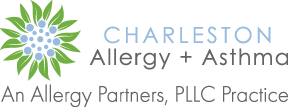As many as 1 in 50 people are at risk for anaphylaxis which is a severe, rapidly progressive, potentially life threatening allergic reaction. Anaphylaxis can occur from a variety of substances such as foods, medications, or insect venoms. Signs of anaphylaxis can include hives, swelling, shortness of breath, coughing, dizziness, low blood pressure or passing out. People are not born allergic to these substances but can become susceptible to developing an allergy after exposure.
If a patient is concerned they may have a severe allergy to something, they should see a board certified allergist who will take a detailed allergic history and perform any allergy testing to determine if the patient is truly allergic. If a patient is found to be at risk for anaphylaxis, they will be taught how to avoid the allergen(s), receive an anaphylaxis action plan that provides guidance on how to treat an allergic reaction should it occur, wear medical alert jewelry that describes their anaphylactic condition, and be prescribed epinephrine auto injectors and taught how to use them.
An estimated 3.6 million Americans were prescribed epinephrine auto injectors in 2015 but it is thought there are many more people at risk of anaphylaxis who should be carrying epinephrine. For those at risk of anaphylaxis, they should have epinephrine with them at all times in case of an accidental exposure and reaction. It is recommended that patients have two epinephrine auto injectors available because up to 20-30% of patients who experience anaphylaxis require more than one dose of epinephrine.
Epinephrine should be used as soon as possible after recognizing the symptoms of possible anaphylaxis. An anaphylaxis action plan will help guide the decision on when to use the epinephrine but if you are unsure if epinephrine should be used, it is better to use it right away than to wait. One of the risk factors for dying from anaphylaxis is delaying the first administration of epinephrine.
If a patient has anaphylaxis, they should be administered epinephrine then seek immediate medical attention. Anaphylaxis may require treatment with multiple doses of epinephrine as well as other ancillary medications. Anaphylaxis can also initially improve but then worsen again hours later so a period of monitoring may be required. Some people try to use antihistamines, such as Benadryl first, but this only treats the skin symptoms of an allergic reaction and does not stop the potentially life-threatening symptoms such as respiratory or cardiovascular compromise. Medical guidelines all recommend epinephrine as the treatment of choice for anaphylaxis.
School aged children at risk for anaphylaxis should have an anaphylaxis action plan and epinephrine auto injectors at school. Patients of all ages should always have epinephrine with them, but are cautioned not to leave the auto injectors in the car for extended periods, as the car reaches high temperatures, it will degrade the medication and make it ineffective. With proper precautions and preparation, patients at risk for anaphylaxis can keep themselves safe and ready to treat a reaction should one occur.
If you are concerned that you may be at risk for anaphylaxis, please make an appointment today for an evaluation with any of our board certified allergists.




